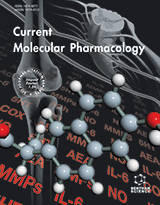Abstract
Despite the progress achieved in chemo- and radiotherapy, cancer is still a leading life-threatening pathology. In that sense, there is a need for novel therapeutic strategies based on our current knowledge of cancer biology. Among the phenotypical features of cancer cells, two of them are of particular interest: their nearly universal glycolytic phenotype and their sensitivity towards an oxidative stress, both resulting from the combination of high anabolic needs and hypoxic growth conditions. By using menadione (vitamin K3) and ascorbate (vitamin C), we took advantage of these features to develop an original approach that consists in the exposure of cancer cells to an oxidant insult. When used in combination, these compounds exhibit a synergistic action and are devoid of major toxicity in vivo. Thus, this review is dedicated to the analysis of the molecular pathways by which this promising combination exerts its antitumoural effect.
Keywords: Ascorbate, menadione, cancer, oxidative stress, glycolysis, cell death
Current Molecular Pharmacology
Title: Targeting Cancer Cells by an Oxidant-Based Therapy
Volume: 1
Author(s): P. Buc Calderon, J. Verrax and H. Taper
Affiliation:
Keywords: Ascorbate, menadione, cancer, oxidative stress, glycolysis, cell death
Abstract: Despite the progress achieved in chemo- and radiotherapy, cancer is still a leading life-threatening pathology. In that sense, there is a need for novel therapeutic strategies based on our current knowledge of cancer biology. Among the phenotypical features of cancer cells, two of them are of particular interest: their nearly universal glycolytic phenotype and their sensitivity towards an oxidative stress, both resulting from the combination of high anabolic needs and hypoxic growth conditions. By using menadione (vitamin K3) and ascorbate (vitamin C), we took advantage of these features to develop an original approach that consists in the exposure of cancer cells to an oxidant insult. When used in combination, these compounds exhibit a synergistic action and are devoid of major toxicity in vivo. Thus, this review is dedicated to the analysis of the molecular pathways by which this promising combination exerts its antitumoural effect.
Export Options
About this article
Cite this article as:
Calderon Buc P., Verrax J. and Taper H., Targeting Cancer Cells by an Oxidant-Based Therapy, Current Molecular Pharmacology 2008; 1 (1) . https://dx.doi.org/10.2174/1874467210801010080
| DOI https://dx.doi.org/10.2174/1874467210801010080 |
Print ISSN 1874-4672 |
| Publisher Name Bentham Science Publisher |
Online ISSN 1874-4702 |
 34
34
- Author Guidelines
- Bentham Author Support Services (BASS)
- Graphical Abstracts
- Fabricating and Stating False Information
- Research Misconduct
- Post Publication Discussions and Corrections
- Publishing Ethics and Rectitude
- Increase Visibility of Your Article
- Archiving Policies
- Peer Review Workflow
- Order Your Article Before Print
- Promote Your Article
- Manuscript Transfer Facility
- Editorial Policies
- Allegations from Whistleblowers
- Announcements
Related Articles
-
The Medicinal Chemistry Implications of the Anticancer Effects of Aspirin and Other NSAIDs
Mini-Reviews in Medicinal Chemistry Hepatic MicroRNA Orchestra: A New Diagnostic, Prognostic and Theranostic Tool for Hepatocarcinogenesis
Mini-Reviews in Medicinal Chemistry Recent Clinical Trials of Cladribine in Hematological Malignancies and Autoimmune Disorders
Reviews on Recent Clinical Trials Telomere Maintenance as Therapeutic Target in Embryonal Tumours
Anti-Cancer Agents in Medicinal Chemistry Analysis of Comparative Proteomic and Potent Targets of Peniciketal A in Human Acute Monocytic Leukemia
Anti-Cancer Agents in Medicinal Chemistry Potentials of Hydrogels in Cancer Therapy
Current Cancer Therapy Reviews MicroRNAs as Diagnostic, Prognostic and Predictive Biomarkers of Ovarian Cancer
Recent Patents on Biomarkers Novel Systemic Drugs for Cutaneous T-Cell Lymphoma
Recent Patents on Anti-Cancer Drug Discovery Ellipticines as DNA-Targeted Chemotherapeutics
Current Medicinal Chemistry Prognostic and Predictive Biomarkers in Cancer
Current Cancer Drug Targets Folate Targeted Solid Lipid Nanoparticles of Simvastatin for Enhanced Cytotoxic Effects of Doxorubicin in Chronic Myeloid Leukemia
Current Nanoscience Domperidone and Long QT Syndrome
Current Drug Safety Association of Metronidazole with Cancer: A Potential Risk Factor or Inconsistent Deductions?
Current Drug Metabolism Down-Regulation of Notch1 Expression is Involved in HL-60 Cell Growth Inhibition Induced by 4-Hydroxynonenal, a Product of Lipid Peroxidation
Medicinal Chemistry Synthetic Hammerhead Ribozymes as Therapeutic Tools to Control Disease Genes
Current Gene Therapy New Strategies in the Discovery of Novel Non-Camptothecin Topoisomerase I Inhibitors
Current Medicinal Chemistry Novel 1, 2, 3-Triazole-Linked Norcantharidin Analogues: Synthesis and Evaluation of Growth Inhibition in a Panel of Selected Tumor-Cell Lines
Letters in Drug Design & Discovery Eliminating Ovarian Cancer Stem Cells: A Potential Therapeutic Target for Ovarian Cancer Chemoresistance
Current Protein & Peptide Science Clinical Proteomics in Cancer Research
Current Proteomics Human Carbonyl Reductases
Current Drug Metabolism


























